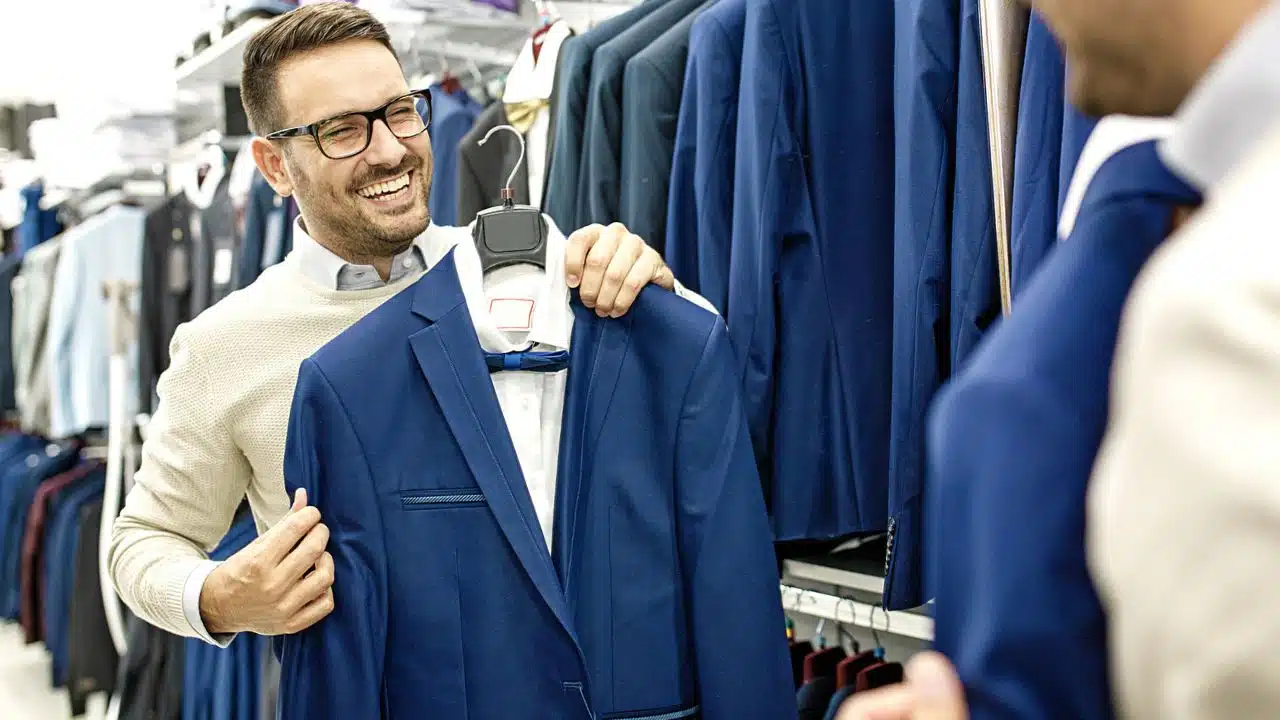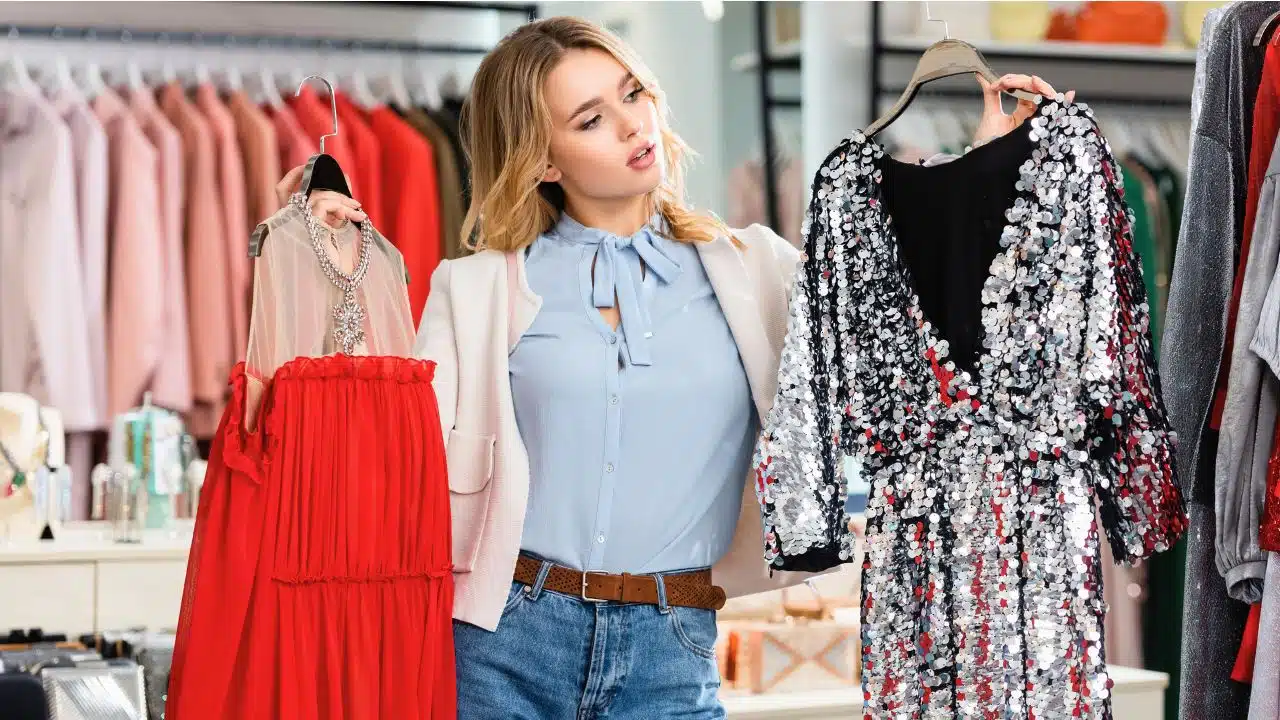Some people spend a lot of money on clothing, while others, like myself, don’t. But it’s not optional—everyone needs enough clothes to be comfortable and to make it through the week. There are often certain expectations, if not a written dress code, on what’s appropriate, too.
The general guideline is that you shouldn’t spend more than 5% of your disposable income on clothing each month.
So, if your net income is $5,000 a month, your clothing budget should be $250 per month for you and your family. If you’re following this guideline, $250 doesn’t go very far these days. Or is there?
Whether you love fashion or only buy what you need, there are many creative ways to stretch a dollar and save big on your clothing expenses.
1. Change Where You Shop

People often flock to outlet malls to find the best deals but shop carefully if you do. According to a CBC Market Investigation, outlet malls are cheaper because their products are cheaper quality-wise compared to products sold in retail shops. So you may not actually be getting a bargain.
You’re probably better off shopping at thrift stores or discount department stores instead. Their prices are often lower, and you can find better quality clothing. If you know what to look for, yard sales are also a great option.
2. Shop Smart Online

More and more people are turning to the Internet to do their clothes shopping because it’s convenient to shop whenever you want, from wherever you want. And if you live in a smaller community like I do, it might be the only way to access certain stores or brands.
It also means you can take your time. You can shop around to find the best deals, use browser extensions like Honey to find deals or use coupon apps or cashback sites like Swagbucks to save even more. There’s also no need to worry about facing pushy salespeople or surprises at the checkout.
3. Sort Items From Low-to-High Prices

If you’re an online shopper, sort those pages from “priced lowest to highest” right off the bat. That way, you’ll see the sales and discounted items first. Hopefully, you’ll find what you’re looking for that also fits your budget.
Better yet, when shopping online, find those sales, deals, promotions, or clearance links and click there first. Then, sort “price low to high.”
As you scroll, pay attention to the price point you’re at and stop when you reach your budgeted amount. For example, if you only have $100 to spend, once you reach items that are $100 each, stop scrolling. You can’t afford them right now, so don’t even look!
4. Stack Offers

Some retailers will let you stack offers, meaning you can get something from the clearance section and also use a “buy one get one free” deal, for example. You can save a lot of money on your clothing expenses this way.
My husband discovered this trick online and paid $300 for over $1,100 worth of clothing—including 13 pairs of pants, two winter jackets, a T-shirt, a belt, a hat, and a pair of winter boots! All of it was delivered straight to our door, too.
You can also try to extend these deals even further with the aforementioned coupon apps, cashback sites, and browser extensions.
For those of you who shop in person, the same general advice applies. Find those clearance and sales racks, and start there. Clarify with store staff what the terms of the sales or promotions are so you can find the best deal.
5. Buy Last Season’s Clothes

A lot of what you’ll find on sale or in those clearance sections will be last season’s clothing. However, because retailers are often months ahead with their products (such as putting out all those Christmas decorations in October), the “last season” for a store is usually still the current season for us consumers.
This means you can find deals on winter clothes in January and deals on summer clothes in August. So no, I’m not suggesting you wear shorts in the middle of winter just to save some money. (But that’s entirely up to you if you want to!)
If you are more fashionable and worried about being behind the trends, stick to buying basics and classic pieces that don’t go out of style.
6. Abandon Your Online Cart

This trick isn’t exactly new, but it might be new to you, so I wanted to include it.
When shopping online, log into your account and purposely leave items in your shopping cart. Typically, in a couple of days, you’ll get a “reminder” email from that company that usually includes a discount code to entice you actually to make the purchase.
This may not work every time or with every retailer, and won’t work if you’re shopping as a “guest” on their site. But it’s worth a shot!
As an added bonus, waiting 24-72 hours before making a purchase is highly recommended in the personal finance world, especially if you’re an impulse shopper. It gives you enough time to think about whether you actually need or want that new item. You may decide not to make the purchase after all, which is a great way to save!
7. Shop in the Men’s or Children’s Sections

Women’s clothing always seems to cost more. (Thank you, pink tax.) So why not shop in the men’s or kid’s clothing sections to try to save some money?
There isn’t much size difference between a boy’s large shirt and a woman’s small, after all. Now, I’m not suggesting that we should all go out and buy ourselves Minecraft or Marvel comic graphic tees (again, that is unless you want to!). But there are plenty of basics available in the children’s section. And if you want pants with pockets, your best bet is to buy men’s pants.
But it’s not just people who buy women’s clothes that can benefit from shopping in other sections of the store. For example, accessories like hats and scarves from the kid’s sections usually fit adults, too. If you’re shopping online, refer to the sizing chart to get an idea of what sizes to try.
Who knows? Depending on your body shape, you might find that the clothes in another section actually fit you and your needs better. As long as it fits you, who cares what the tag says?
8. Try Everything On Before Buying

There is little to no consistency in sizes between the different brands and companies. You could be a size 6 at one store and a size 12 at another. It’s so frustrating!
Which is why I learned the hard way to try everything on before buying it. (Especially when it comes to pants. Why does the boot-cut fit, but the straight-leg doesn’t?!)
For you online shoppers, be sure to try on your new clothes within the first few days of getting them. If they don’t fit right or aren’t what you were hoping for, return them!
9. Actually Return Things

Don’t waste your money by letting an unwanted item sit there rather than returning it. Yes, returning unwanted items can be a pain, but that’s the reality of online shopping or when you change your mind.
Each store has its own return policy. Some can be returned in-store (if a physical store is nearby), and others require shipping. Some give you lots of time to make a return, while others might only give you a few days. Be sure to check these policies so you can get a refund and aren’t stuck with something that you’ll never wear.
10. Follow the One In, One Out Rule

One of the best ways to keep your clothing expenses in check is to follow the “one in, one out” rule. If you’re not familiar, it simply means for every new item of clothing you buy or bring “in,” one item has to go “out.” It could be donated, sold, repurposed, or thrown away.
This is a great strategy for many reasons. It helps you be more aware of what clothes you already own, control the clutter as you purge the clothes that you no longer need or want, and be more mindful of your shopping habits, knowing that if you buy 12 new shirts, you’ll have to give up 12 articles of clothing that you already have.
11. Buy Bulk Basics

One of the smartest things I’ve done is to only buy black socks. For $10, you can get 20 pairs, and you will literally never have to waste time matching socks or sorting colors again.
We also bought two dozen plain black t-shirts from an online wholesaler for $2 each, and I wear them all the time. They are great to wear with a hoodie when it’s cold, as pajamas, or even with a pair of jeans to run errands.
12. Borrow or Rent Special Items

Why spend hundreds of dollars on a nice dress or a suit that you’ll only wear once? You will save a lot of money if you can borrow these more expensive items, so “shop” the closets of your friends or family members who are roughly the size you need first.
If you can’t find what you need, consider renting it. Renting prom tuxes has been a thing for decades, but this market has extended. You can rent pretty much everything you would need, from designer dresses to maternity wear to athletic gear.
Change Your Clothes Shopping Habits

With a limited budget, changing your shopping habits is a smart and straightforward way to avoid racking up huge credit card balances. Small, simple changes—like the ones included here—and a little self-discipline are all it takes.
Dressing Business Casual for Work

Business casual has become the standard dress code for many companies across various industries. It allows for more relaxed and comfortable clothing options while still maintaining a professional appearance.
Here are the key pieces of business casual clothing that can be mixed and matched to create several different outfits while still maintaining a professional look.
Amanda Kay, the founder of My Life, I Guess, provides valuable career advice and support for anyone striving to make a living and, more importantly, make a life. Whether it's navigating job searches, learning new skills, overcoming unemployment, or dealing with debt, My Life, I Guess has been a go-to resource for career guidance and financial stability since 2013. Amanda's expertise and relatable approach have been featured in trusted publications such as MSN, Credit.com, Yahoo! Finance, the Ladders and Fairygodboss.
